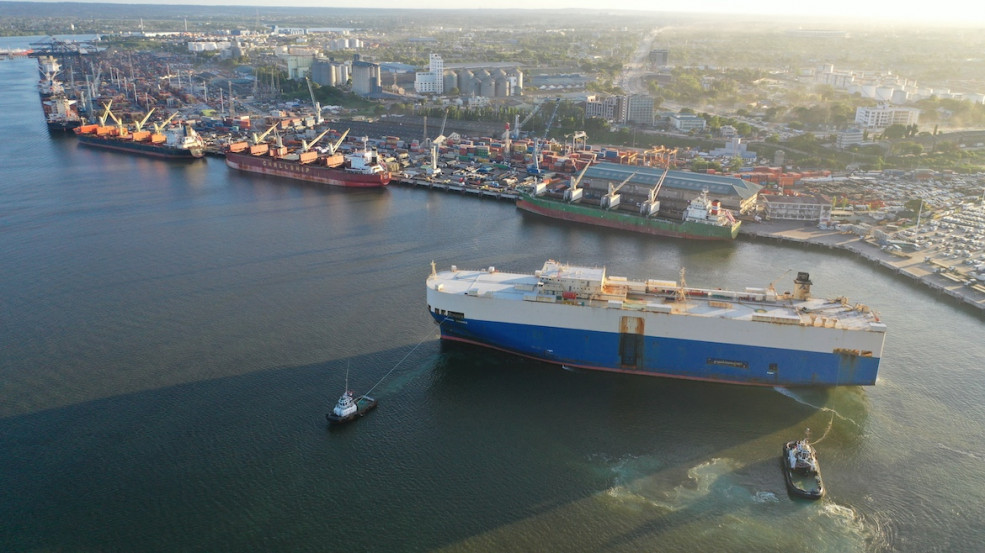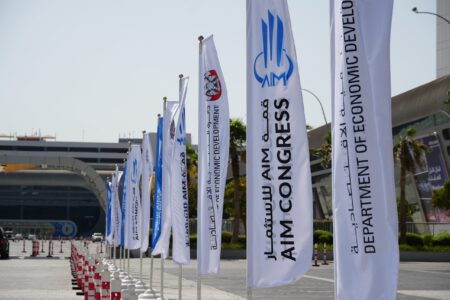- Trade data shows Malawi perefers Tanga Port over Mozambique’s container terminals Beira, and Nacala.
- Tanga Port current capacity is more than 1.2 tonnes per annum.
- The harbour racks in an over $720 000 during the first quarter 2024/2025.
Tanga Port is rapidly gaining traction across East Africa and among international companies, positioning itself to potentially surpass Mtwara Port as Tanzania’s second-busiest port, according to the Tanzania Ports Authority (TPA).
This growth aligns with the government’s vision of transforming Tanzania into a premier cargo and transit hub. TPA is meeting this challenge by enhancing the efficiency and capacity of its ports, ensuring they remain competitive in the region.
Currently, Kenya’s Mombasa Port stands as the largest and busiest port in East Africa, closely followed by the Port of Dar es Salaam. According to the Kenya Ports Authority, the Port of Mombasa handled 41.1 million tonnes of cargo in 2024, reflecting a 14.2 per cent growth from the harbour’s trade activity in 2023.
In comparison, TPA reports that Dar es Salaam handled 14.4 million tonnes of cargo between May and November 2024, reflecting a 5.6 percent increase compared to the same period in 2023.
However, TPA is not stopping with the port of Dar es Salaam, it has now expanded and continues to expand another Indian Ocean Port, the Port of Tanga, the longest-serving port in the region.
Tanga port journey to second largest harbour in Tanzania
Only this week, the Ministry of Energy decided to use Tanga Port, the second largest in Tanzania, for emergency fuel procurement, after Malawi chose the upgraded port of Tanga over its usual top picks over Mozambique’s port of Beira, and Nacala.
Commenting on the development, Tanzania’s Energy Minister Ibrahim Matola said other Tanzanian ports available for use and/or under construction include Shumba Mjini Port, Wete Port in Pemba, and the development of Kizimkazi Port.
“There is a surge in port activity at Tanga Port… business has increased 400 per cent in registered clearing agents from 32 to 164, which is clear evidence of a boom in economic growth across the region,” the minister said.
Tanga Port Manager, Mr. Masudi Mrisha, acknowledged the increase in activities at the sea container terminal; “There was a sharp rise in ship traffic between July 1 and September 30, at least 113 vessels docked at our port… the increase is directly related to the expansion and improvement of our clearing and forwarding services,” he said.
The increase in the port’s capacity is also evident in the type of vessels it is now receiving, for example, of the said 113 ships, 40 were high-seas vessels, and 73 operated along the coast. “This growth is also evident in the increase in employment…we had only 32 registered clearing and forwarding agents, now we have more than 132,” the executive added.
Mr. Mrisha explained that business at the port has increased thanks to the reduction of loading and offloading time, which has decreased from five days to just two; “We are now running six shifts and operating 24 hours a day,” he detailed.
Other factors leading to the business boom at Tanga port include, removal of fees that were previously charged to clients for hauling cargo from ships anchored 1.7 kilometres offshore, he went on to expound.
“Clients used to pay $1.3 dollars per cargo for this service, but we have scraped off that charge and it is paying off,” he said.
Notably, the port of Tanga processed 333,643 metric tonnes of cargo between July and September, surpassing its three-month target of 283,025 tonnes by 17.8 per cent.
“This is a significant increase from the 230,000 tonnes that we handled during the same period last year,” the port manager said. He also pointed out that, should the trend continue; “we may reach our target of handling 1.4 million metric tonnes of cargo this year,” said the optimistic port manager.
Looking forward, he said they are now constructing new cargo storage facilities at the nearby Mambani inland port site to accommodate the growing volume of cargo.
“We also have other sites, including land we acquired at Chongoleani, where the East African Crude Oil Pipeline (EACOP) is building its oil terminal,” he detailed saying all these sites will serve to increase its capacity to handle more cargo.
The expansion of Tanga Port is part of Tanzania’s strategy to increase its capacity to handle larger ships, attract more vessels, and boost the amount of cargo it handles. As reported, the upgrades have already led to a more than 100 per cent rise in both ship traffic and revenue at the port.
The Tanzania Ports Authority (TPA)’s goal is to see the Tanga marine terminal become Tanzania’s second-largest port after Dar es Salaam, an honour currently bestowed on Mtwara Port.
The port of Tanga has a long history, it was first built in 1891 when the region was German East Africa, then rebuilt in 1914 initially to serve the commercial and agricultural needs of northern Tanzania. Now it has to serve the rest of the country and the larger East and Central Africa area as well.
Initially, it’s capacity was low, and ships had to anchor two kilometres offshore due to its shallow berth. This offshore offloading caused additional charges that discouraged business.
“Now, with the improved infrastructure, ships can dock directly at the pier significantly reducing cargo handling expenses,” the port manager reiterated.
These improvements have attracted large and modern ships that previously used competing ports in neighbouring countries but are now choosing to use Tanga Port.
Summing up, he said Tanga Port, has racked in an impressive revenue collection of 18 billion during the first quarter of the 2024/2025 already, largely attributed to the arrival of 11 ships. In that short span of time, Tanga Port has handled a total of 333,718 tonnes of cargo, exceeding its target of 283,290 tonnes by 17 per cent.
Also Read: Zanzibar Bawe Island Resort: Will islet leasing system bear fruit?
The potential in the Port of Tanga
According to TPA, each port is unique in terms of its characteristics which in turn can have major influences on port performance and efficiency. As for Port of Tanga, it is strategically located to serve the northern Regions of Tanga, Kilimanjaro, Arusha, Manyara, the lake zone, and neighboring countries of Kenya, Rwanda, Burundi, Southern part of Uganda and now even Malawi.
The Port of Tanga has a wide and deep entrance channel that can accommodate a vessel of any size and draft/draught. It has no tide restrictions for vessels entering or leaving the port and has a natural and well-sheltered bay for shipping services
The port of Tanga also has a modern quay wall with total length of 450 meters covering berth one and two. Currently there are two offshore pipelines with 12 inches are used for handling liquid bulk (oil products).
The port is also served by facilities at the nearby Totten Island where there is Conventional Buoy Mooring (CBM) used for handling of Liquefied Petroleum Gas (LPG) by means of flexible hoses connected to submarine pipelines. It has a conventional yard with a paved area of 29,000m2, three sheds with a 13,800m2 stacking area, one dock yard area for marine equipment maintenance and an Ro-Ro Ramp for passenger vessel services.
As for storage facilities, the Tanga Port has three cargos sheds for covered storage of weather sensitive cargo. It has a paved area (container yard) for storage of containers and other cargo which do not require overhead covering, the area measures 29,000m2.
“Its covered storage (sheds) is an area measuring 13,800 square meters,” the port manager detailed.
He reiterated that thanks to the renovations and upgrades, its current capacity is more than 1.2 tonnes per annum and looking ahead, they are now strengthening, deepening and modernization the two berths at the port.










